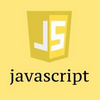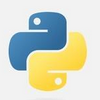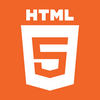Which additional securities do you add to your open source cms installations?(您在开源 cms 安装中添加了哪些额外的证券?)
问题描述
I know that being open source does not necessarily makes a program more/less secure than closed source (let's assume this neutrality, to keep flames out of this post). Fact is: since the source code is open, everybody knows your defaults urls, default administrator logins, etc.
I'm using Wordpress and Joomla in some projects of my clients, and I always try to create some kind of additional security. Excluding always updating your files to latest version, what do you usually do to add more security in this scenario? Some of my thoughts:
I always change the "admin" name when applicable;
I would like to don't explicity say which technologies I'm using, but since I want to promote the cms (I think is the minimal I should do), I just don't say the exact version so attackers don't know which exact vulnerabilities they can attack (wordpress automatically creates a meta tag in html saying "Wordpress 2.8.4" for example);
Set correct permissions in directories, and bash scripts in my server that run everyday at 0h setting 755 to directories I may have changed to 775 during the day and forgot to turn back;
When applicable, I set apache configuration to limit ips.
What else should I try to do? What "out of the box" solutions do you usually do to your installations?
Using something like the mod_security or mod_evasive Apache's modules can be an idea too -- I suppose they require some configuration, though ; and you should test you website still works OK before using those on your production server.
As they are Apache's modules, it also requires you can install new Apache's module -- which means you have to be admin of the server.
On a pure PHP-level, there is a tool called PHP-IDS ; quoting its website :
PHPIDS (PHP-Intrusion Detection System) is a simple to use, well structured, fast and state-of-the-art security layer for your PHP based web application. The IDS neither strips, sanitizes nor filters any malicious input, it simply recognizes when an attacker tries to break your site and reacts in exactly the way you want it to. Based on a set of approved and heavily tested filter rules any attack is given a numerical impact rating which makes it easy to decide what kind of action should follow the hacking attempt. This could range from simple logging to sending out an emergency mail to the development team, displaying a warning message for the attacker or even ending the user’s session.
I suppose you could "plug" it in front of the CMS you are using, by adding a couple of lines to its entry point -- if there is a common entry point you can identify, or some file that's included once at the beginning of each page.
There is a "How to use it in my application?" entry in the FAQ.
And, like you said, securing your server is nice : no remote SQL access, for instance ; checking the provileges of each user on the system, too ; keeping your software up to date, ...
这篇关于您在开源 cms 安装中添加了哪些额外的证券?的文章就介绍到这了,希望我们推荐的答案对大家有所帮助,也希望大家多多支持编程学习网!
本文标题为:您在开源 cms 安装中添加了哪些额外的证券?


- 如何定位 php.ini 文件 (xampp) 2022-01-01
- 从 PHP 中的输入表单获取日期 2022-01-01
- Oracle 即时客户端 DYLD_LIBRARY_PATH 错误 2022-01-01
- 正确分离 PHP 中的逻辑/样式 2021-01-01
- 没有作曲家的 PSR4 自动加载 2022-01-01
- 带有通配符的 Laravel 验证器 2021-01-01
- Laravel 仓库 2022-01-01
- Mod使用GET变量将子域重写为PHP 2021-01-01
- PHP Count 布尔数组中真值的数量 2021-01-01
- SoapClient 设置自定义 HTTP Header 2021-01-01




